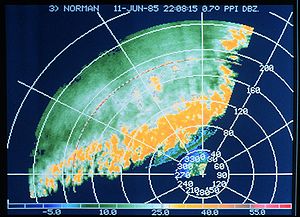Rain fading (also referred to as rain attenuation) at the higher microwave frequencies (“millimeterwave” bands) has been under study for more than 60 years. Much is known about the qualitative aspects, but the problems faced by microwave transmission engineers—who makes quantitative estimates of the probability distribution of the rainfall attenuation for a given frequency band as a function of path length and geographic area—remains a most interesting challenge, albeit now greatly assisted by computer rain models.
A surprising piece of the puzzle is that the total annual rainfall in an area has almost no correlation to the rain attenuation for the area. A day with one inch of rainfall may have a path outage due to a short period of extremely high localized rain cell intensity, while another day of rain may experience little or no path attenuation because rain is spread over a long period of time, or the high intensity rain cell could miss the microwave hop completely.
Over the years, we have learned a lot about deploying millimeter wave microwave hops for our customers:
- Rain outage approximately doubles in each higher millimeter wave band, e.g. 18 to 23 GHz
- Rain outage is directly proportional to path length—assuming a constant fade margin for each hop
- Rain outage in tandem-connected short hops are the same as for a single long hop—if they have the same fade margin
- Multipath fading in optimally aligned millimeterwave hops does not occur during periods of heavy rainfall, so the entire path fade margin is available to combat rain attenuation fades
More information about assessing rain-induced attenuation is available in our new white paper, Rain Fading in Microwave Networks.
Dick Laine, PE
Aviat Networks
Related articles
- The influence of rain attenuation (sce.carleton.ca)
- The World’s Longest All-IP Microwave Link (aviatnetworks.com)
- Comparison of Multiple Rain Attenuation Models with Three Years of Ka Band Propagation Data Concurrently Taken at Eight Different Locations (spacejournal.ohio.edu)
- Microwave Wireless Backhaul Case Study: Tooele County (Utah) (aviatnetworks.com)
- Proposed Rain Attenuation Model Revised From ITU Used For Prediction in Tropical Climates (aprsaf.org)
Filed under: From the Field, Technology, Tips & Tricks, Transmission Engineering Tagged: Aviat Networks, backhaul, Dick Laine, Frequency range, Internet Protocol, microwave, Microwave transmission, Principal Engineer, Rain Attenuation, Rain Fade, Rain Fading, Telecommunication, Time-division multiplexing, wireless




















